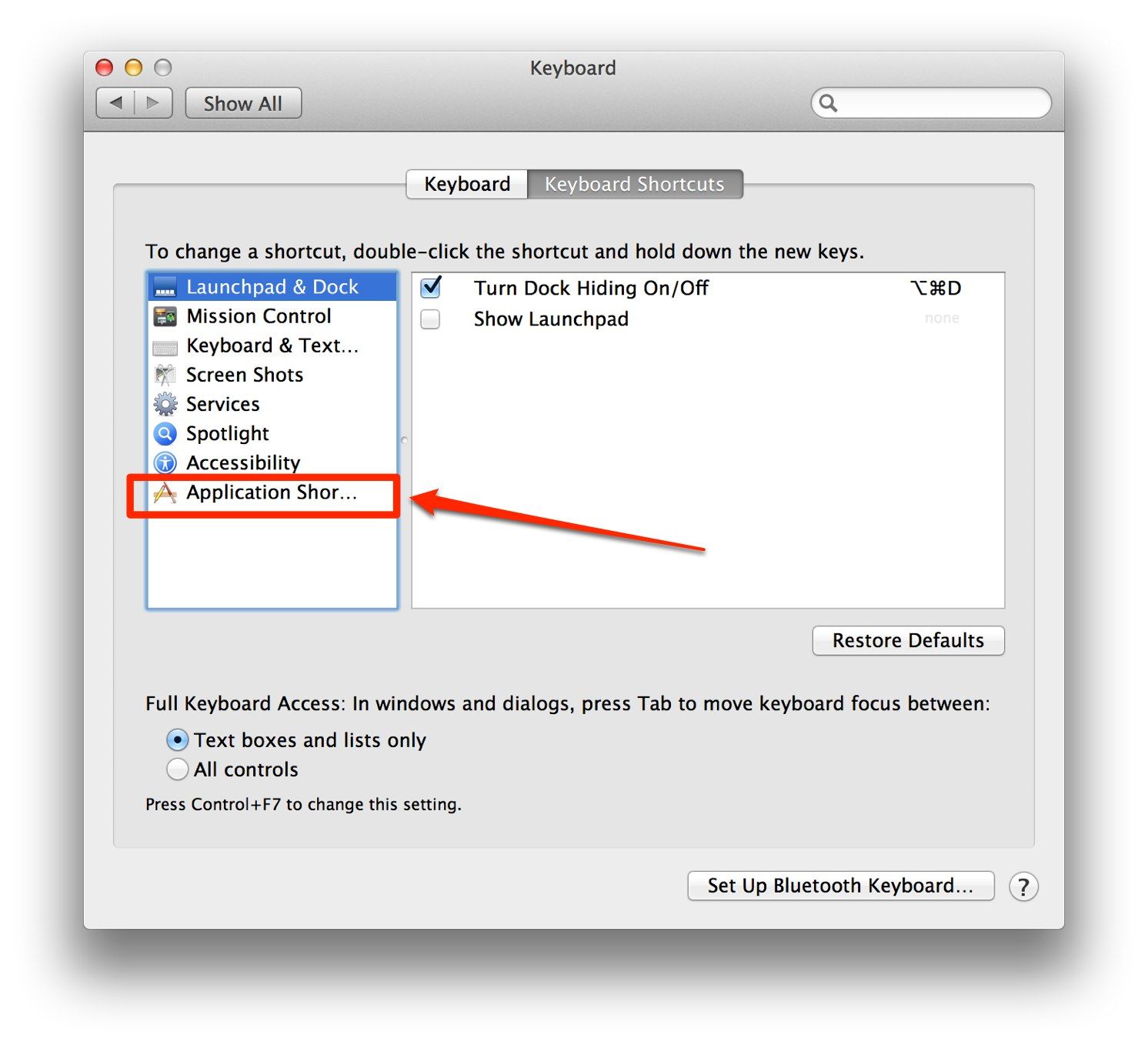Assigning Keyboard Shortcuts to Bookmarklets in Chrome
A while ago I posted about using Safari’s native keyboard shortcut for quick access to the bookmarks in your Bookmarks Bar. Unfortunately, Chrome doesn’t assign keyboard shortcuts to bookmarks natively. That doesn’t mean, however, that it can’t be done. First, go to System Preferences > Keyboard and click on the Keyboard Shortcuts tab. Click on Application Shortcuts—it should be an option on the left–hand side of the window.

Screen Shot 2013–02–23 at 3.00.35 PM
Now click on the + to add a shortcut. Another dialogue box will pop up with three fields: Application, Menu Title, and Keyboard Shortcut. Here’s what you need to do in each of those three fields:
Application: Choose the appropriate application. In this case Google Chrome.
Menu Title: Type the name of the bookmark or bookmarklet, exactly as it appears in Chrome. For example, in the photo below, I would type “bitly Sidebar” if I wanted to assign a keyboard shortcut to that bookmark. For Pinboard I would type—yep, you guessed it—“Pinboard.”

Chrome Bookmarks Bar
Keyboard Shortcut: Assign your keyboard shortcut[1]. For easy reference, I assign 1, 2, ^3, etc. to the bookmarks in my Bookmarks Bar, moving from left to right.
Of course, you aren’t restricted to assigning keyboard shortcuts to the bookmarks in the Bookmarks Bar only. You can assign keyboard shortcuts to any bookmark you have saved. My most used bookmarks and bookmarklets tend to be located there, however, so they are the ones that are assigned shortcuts.
Now, if I want to send a blog post to Instapaper for later reading, I simply press ^1. Need to create a shortened bitly link for the page I’m currently on? ^5.
Slick.
This is easy to remember and can save you a lot of time over the long haul.
If you are a Chrome user on an Apple machine, then this is well worth your time to set up. Give it a try.
What are your favorite time–saving browser keyboard shortcuts or tips?
- You’ll want to make sure you don’t choose a shortcut that is already in use. Since Chrome uses ⌘1, ⌘2, ⌘3 as keyboard shortcuts to jump to open tabs, I use the Control key instead. ↩